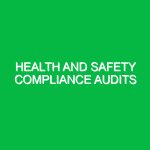In the vast, unpredictable expanse of the ocean, maritime operations play a crucial role in global trade, transportation, and resource extraction. However, the challenges that come with operating in such an environment can pose significant risks to health, safety, and the environment (HSE). Understanding and implementing effective safety measures for maritime operations is not just a regulatory requirement; it is a vital practice that ensures the well-being of crew members, the protection of marine ecosystems, and the smooth operation of maritime activities. This article delves into the essential safety measures that should be adopted in maritime operations, outlining potential hazards, best practices, relevant regulations, and much more.
Understanding Safety Measures for Maritime Operations
Safety measures for maritime operations encompass a broad range of protocols and procedures designed to minimize risks associated with working at sea. These measures are crucial for managing the health and safety of crew members, protecting the marine environment, and ensuring compliance with international regulations. With the maritime industry being inherently dangerous—due to factors like the presence of heavy machinery, adverse weather conditions, and the sheer unpredictability of the ocean—implementing robust safety protocols is essential. According to the International Maritime Organization (IMO), effective safety measures can significantly reduce accidents and fatalities in maritime operations.
Identifying Hazards and Risks in Maritime Operations
Maritime operations are fraught with potential hazards that can jeopardize safety. Understanding these risks is the first step toward mitigating them. Some common hazards encountered include:
1. Weather-Related Risks
Severe weather conditions—such as storms, high waves, and fog—pose significant threats to maritime operations. These conditions can lead to navigational challenges and increase the risk of accidents. For instance, during a storm, visibility can drastically reduce, making it difficult for crew members to execute their duties safely.
2. Equipment Malfunction
Heavy machinery and equipment are essential for maritime operations, but they can also be sources of danger. Equipment failures can lead to accidents, injuries, and even fatalities. Regular maintenance and inspections are crucial to ensure that all machinery is functioning correctly.
3. Human Error
Human error remains one of the leading causes of accidents in maritime operations. Fatigue, miscommunication, and lack of training can contribute to mistakes that may have severe consequences. For example, a simple miscommunication during a cargo loading operation can result in significant damage to the vessel and cargo.
4. Chemical Hazards
Handling hazardous materials, such as fuels and chemicals, can pose serious risks. Spills and leaks can not only harm crew members but also have devastating effects on marine ecosystems. It is vital to follow strict protocols when dealing with such materials.
5. Fire and Explosion Risks
Fires and explosions are critical hazards in maritime operations, particularly on oil and gas platforms. The confined spaces and presence of flammable materials increase the risk of such incidents. An example can be drawn from the Deepwater Horizon oil spill, which was partly attributed to safety oversights leading to a catastrophic explosion.
Implementing Effective Safety Precautions
Knowing the risks is just the beginning; implementing effective safety precautions is essential for minimizing hazards. Here are some best practices that should be adopted:
1. Comprehensive Training Programs
Investing in thorough training programs for crew members is paramount. These programs should cover emergency protocols, equipment handling, and safety practices. Regular drills can ensure that crew members are prepared for various scenarios, from man overboard situations to fire emergencies.
2. Regular Equipment Maintenance
Establishing a routine maintenance schedule for all equipment can significantly reduce the risk of malfunctions. Operators should document maintenance activities and conduct regular inspections to identify potential issues before they escalate.
3. Effective Communication Systems
Implementing robust communication systems is vital for ensuring that all crew members are on the same page. Clear communication can prevent misunderstandings that lead to accidents. Using standardized communication protocols can further enhance clarity.
4. Environmental Safety Measures
To protect marine ecosystems, operators should adhere to strict environmental safety measures. This includes proper waste disposal, spill response plans, and the use of environmentally friendly products whenever possible. For example, adopting biodegradable cleaning agents can minimize harmful effects on marine life.
5. Emergency Response Plans
Developing comprehensive emergency response plans that outline the steps to take in various emergency situations is critical. These plans should be regularly reviewed and updated to reflect new risks or changes in operations. Crew members should be familiar with these plans to ensure swift and effective responses during emergencies.
6. Personal Protective Equipment (PPE)
The use of appropriate personal protective equipment (PPE) cannot be overemphasized. Crew members should be equipped with life jackets, helmets, gloves, and other necessary gear to protect against potential hazards. Regular training on how to use PPE effectively is also essential.
Regulations and Standards Governing Maritime Operations
Compliance with regulations and standards is a critical aspect of ensuring safety in maritime operations. Various organizations set forth guidelines that govern safety practices. Some key regulations include:
1. International Maritime Organization (IMO) Regulations
The IMO plays a pivotal role in establishing safety standards for the maritime industry. The International Convention for the Safety of Life at Sea (SOLAS) is a fundamental instrument that sets minimum safety standards for ships, covering aspects such as construction, equipment, and operation.
2. Occupational Safety and Health Administration (OSHA)
In the United States, OSHA regulations apply to maritime operations, focusing on ensuring safe working conditions for employees. Compliance with OSHA standards can help companies avoid fines and enhance overall safety.
3. International Safety Management (ISM) Code
The ISM Code provides a framework for managing safety and environmental protection in maritime operations. It encourages the establishment of safety management systems that integrate risk assessment and safety protocols.
4. Class Society Standards
Classification societies, such as Lloyd’s Register and DNV GL, provide guidelines for the design and maintenance of vessels. Adhering to these standards ensures that ships are seaworthy and safe for operations.
Conclusion
Safety measures for maritime operations are not merely a checklist of tasks to complete; they are a comprehensive approach to safeguarding lives, protecting the environment, and ensuring the smooth functioning of maritime activities. By understanding the potential hazards and implementing effective precautions, operators can significantly reduce risks. Compliance with established regulations ensures that safety remains at the forefront of maritime operations. As the maritime industry continues to evolve, embracing a culture of safety will be crucial in navigating the challenges of the future. Remember, in the words of a seasoned mariner I once met, “The sea is unforgiving; it rewards those who respect its power and prepare for its unpredictability.”


